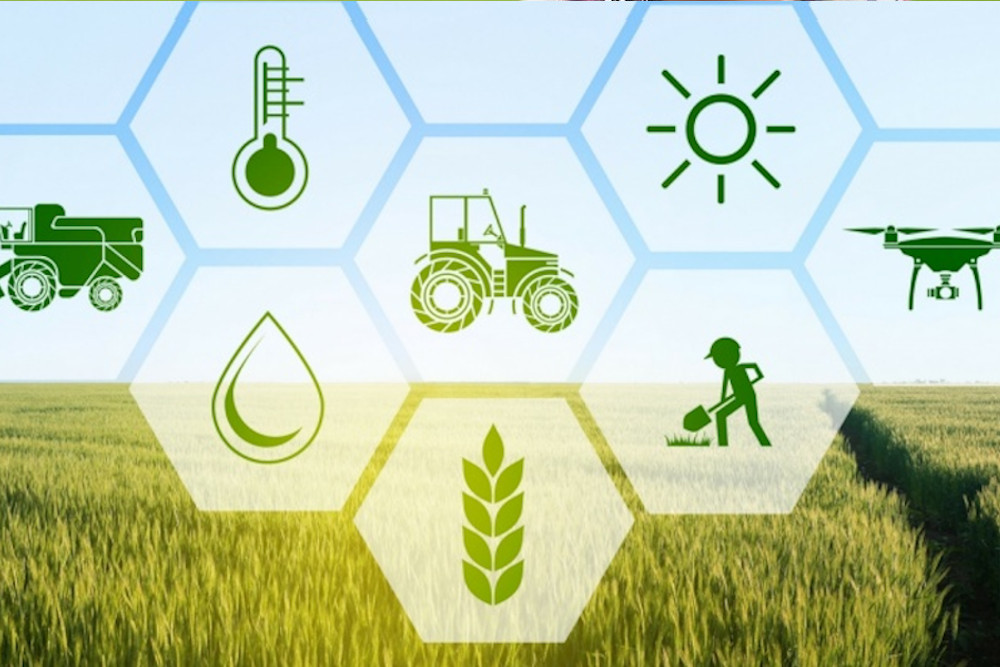
Increasing profits thanks to technology in agriculture is possible. Not only for what we talked about in the article on precision agriculture, but also, in general, for all the sections concerning the Smart Agrifood, that is the digital innovation of the agri-food industry. From production to storage, from processing to distribution, from certification to sales: the smart agrifood acts in a highly positive way in all these steps. But what exactly is smart agrifood and why could it be really convenient for a company? Let’s see it together in this article.
Smart Agrifood: FAO and international needs
The global political strategies on the development of agriculture revolve mainly around the project that bears the name of Climate – Smart Agriculture (CSA), born from an idea of the International Organization of Agriculture and Agribusiness, known more simply as FAO.
The FAO program has 3 main objectives:
- Sustainable increase in agricultural productivity and farmers’ incomes;
- Search for new forms of resilience of agricultural ecosystems,so as to adapt to climate change;
- Reduction of greenhouse gases (where possible).
These 3 objectives are pursued by providing guidelines to innovate the world’s agricultural systems towards solutions compatible with the needs of food safety and environmental sustainability.
Furthermore, these guidelines must be adapted to the specific characteristics of each country and territory, but without prejudice to the creation of cropping systems with low environmental impact and low costs, thanks to tools that automatically control the distribution of production factors (water, fertilizers, pesticides, etc.).
Smart Agrifood, therefore, is a management strategy that uses information technology to collect data from multiple sources in view of their subsequent use in the context of decisions concerning production activities at the large agri-food fair
A world hunger
To understand the goals of FAO, we must not think only of our country or, in general, of all Western countries. In reality, in the world, there are nations, places, populations that are still suffering from hunger and that world agricultural production cannot satisfy.
The moral nature of FAO, aimed at satisfying the primary needs of every individual present on this planet, has led scientists, agronomists, biologists and professional technicians around the world to strive to find alternative solutions.
The land is a finite good and agricultural production is closely related to the ‘vocality’ of the territory: in the case of an increase in demand for a given agricultural product, in fact,farmers have the only possibility of buying existing companies that have that specific production.
As if that were not enough, the agricultural sector is strongly conditioned by external agents, especially meteorological ones. Think of unpredictable factors, such as environmental risks, rain, hail, wind, biological hazards, chemical pollution. Consider also the so-called insurmountable factors, such as the limited nature of the land, precisely the seasonality, the perishability of the products.
The agronomic techniques known up to now can contain these risks, but they cannot eliminate them completely except with an increase in production costs.
Thus a fundamental concept arises from these problems: making the best use of resources and production factors so as to increase production, necessary to feed the entire world population, and at the same time increase the income of farmers, always remaining faithful to the rules of food security for respecting the health of the world’s citizens. In other words, if we want to achieve more while maintaining the same possibilities, we must operate more efficiently. If I wanted to translate all this into one word, then, we could say: efficiency.
This is why precision farming and the Smart Agrifood come into play, because only the technology and the study of data (especially meteorological and climatic) collected thanks to it can allow us to make the most of resources, without wasting material or money .
Which technologies are part of the Smart Agrifood?
The smart agrifood is composed of numerous technologies. We want to show you them in relation to the section of the supply chain on which they affect.
Production:
- Sensors in the field and on machinery
- Drones
- Satellite Images
- Decision support systems
Transformation:
- Quality control sensors
- Big Data Analytics
- Dematerialization systemsIntegrated traceability
Distribution:
- Logistics optimization systems
- eCommerce Platforms and Food Delivery
- Blockchain
Consumption:
- Smart labels
- Sensors for waste reduction
- Meal kits
- Big Data Analytics
